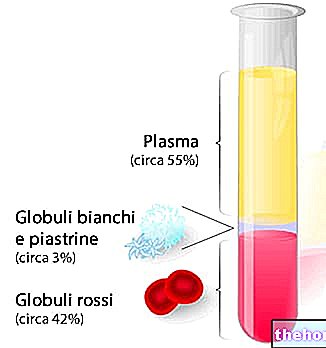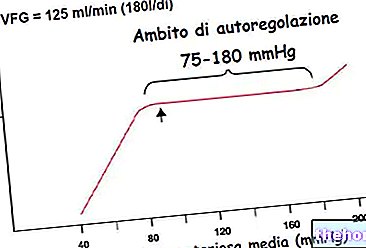The arteries are circular membranous canals, used to transport blood from the heart to all the tissues of the organism; moving away from it they give rise to branches that gradually decrease in diameter, until they flow into the capillary networks. Despite this, the arteries are well far from being mere inert conduits; we are in fact talking about dynamic structures, capable of contracting and expanding in response to the needs of the organism.
Artery classification
Contractility and elasticity are characteristics differently represented in the various types of arteries. Based on their structural particularities we distinguish:
large arteries or elastic arteries: they have a diameter that exceeds 7mm, with a large gap and a particularly elastic wall, necessary to dampen the strong pressures given to the blood by the heart. They are also called conduction arteries; examples are the aorta and its main branches, and the pulmonary arteries.
Medium caliber arteries or muscular arteries: they have a diameter between 2.5 and 7 mm, with a large gap and a strong but not too elastic wall; they also offer low resistance to blood flow. They are considered distribution arteries; coronary and renal arteries are examples.
Small-caliber arteries or arterioles: rich in muscle tissue, they have a small gap and a thick and contractile wall, thanks to which they regulate and control the resistance of the flow in the capillary bed. They are governed by a rich innervation of sympathetic fibers and by various local factors. The arterioles represent the extreme ramifications of the arterial tree and continue in the capillaries.
For what has been said, the caliber and elasticity of the arteries progressively decrease from the aorta towards the periphery, while the smooth muscle component increases consequently. Blood pressure and velocity also decrease as you move away from the heart; the total transverse section, on the other hand, increases, because the caliber of the sum of the collateral and terminal branches of each artery is always greater than that of the vessel of origin. Therefore, there are gradual transitions from one type of artery to another, thus it is also possible to identify arteries of a mixed type, which have intermediate characteristics between the different types of vessels.

All arteries carry oxygen-rich blood. The pulmonary artery is an exception, which carries deoxygenated blood to the lungs - where red blood cells release carbon dioxide to enrich themselves with oxygen - and the umbilical ones into the fetus. We therefore speak of systemic arteries, to indicate the blood vessels responsible for the transport of oxygenated blood from the heart to the rest of the body, and of pulmonary arteries, used for the transport of deoxygenated blood from the heart to the lungs; consequently the pulmonary veins, unlike the systemic ones, carry oxygen-rich blood.
The walls of the arteries
The wall of all the arteries is made up of three concentric tunics: the intimate, innermost, middle and adventitia (or external cassock).
The intimate cassock, or simply intimate, represents the innermost layer of the vessel wall; it delimits the lumen and is formed by a thin layer of endothelial cells that rests on an equally small layer of connective tissue; acts as a protective coating and ensures regulation of the transport of material between blood and tissues. The cells that compose it play very important roles, in some ways still to be clarified, such as the release of paracrine substances capable of regulating blood flow.
The medium cassock it is made up of smooth muscle fiber cells and elastic fibers; it is generally the thickest and most variable based on the caliber and type of artery. The medium tunic has the purpose of conferring elasticity to the vessel (in the large-caliber arteries the elastic fibers are abundant, while the contractile ones are relatively few) and contractility (in the muscular arteries there is a predominance of the smooth muscle content over the elastic).
The adventitious cassock, more external, is made up of loose connective tissue, with bundles of smooth muscle fiber cells, and has mainly a containment purpose; in large and medium caliber vases it contains i vasa vasorum (small vessels that supply and nourish the vascular walls) and i nerva vasorum (sympathetic vegetative fibers essentially responsible for controlling the smooth muscle fibers of the intermediate tunic).
Between one tunic and the other there are elastic plates; internal elastic foil it is a dense elastic membrane that separates the intima from the media, while the less developed external elastic lamina represents the outer limit of the media tunic.

Arterioles and main arteries "
















.jpg)











